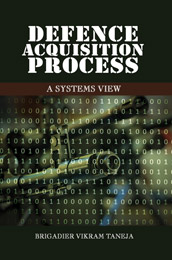Subjects
Impact of Defence Offsets on Military Industry Capability and Self-Reliance: The Road Ahead
S N Misra
India embarked upon the liberalisation path in1991 by dismantling the Licence, Quota, Permit Raj. A decade later, the defence sector allowed100 percent private sector participation with 26percent Foreign Direct Investment (FDI). The offset policy in 2005 and its subsequent refinements aimed at leveraging India’s big ticket acquisitions to bring in substantial FDI, Joint Ventures (JVs) and outsourcing arrangements, thereby improving the self-reliance quotient. Despite such policy initiatives, India’s military industry capability and self-reliance remain at a low ebb. There is considerable unease over the implementation of defence offsets, due to the meagre inflow of FDI into manufacturing and the R&D sector, lukewarm long term investment interest of foreign arms majors in Indian industry and outsourcing arrangements predominantly for low end products, services and Maintenance, Repair Overhaul (MRO) so far.
To galvanise the process, the government needs to develop a comprehensive industrialization strategy for the manufacturing sector and dovetail defence industry capability as part of this larger policy mosaic. Use of offsets can be a critical facilitator of this strategy. Of the four BRIC (Brazil, Russia, India, and China) countries that are expected to be global leaders in 2020, Brazil, China and Russia are seen to have taken significant strides in aerospace, shipbuilding, manufacturing, exports and R&D, with offsets playing a significant role.
India is yet to realise its full potential in these areas. The offset policy can be a powerful instrument for such global leadership. FDI in defence should be increased to at least 50 percent as this is likely to bring in significant key manufacturing and design technology capability.
Simultaneously, substantial R&D investment and joint technology projects will be needed to spur the export potential and the spin-off to the civil sector. Front end defence technology in electronics, avionics and metallurgy and propulsion has always been a precursor to overall growth in Science and Technology (S&T) and national capability build-up. This has to be supplemented by social sector investment, skill upgradation and training. A mix of direct and indirect offsets will bolster this process.
A liberal offset policy, with strong government mentoring, has the heady potential to make India a global hub in defence technology and manufacturing, and more self-reliant in critical defence systems and platforms.


 Political Science
Political Science



